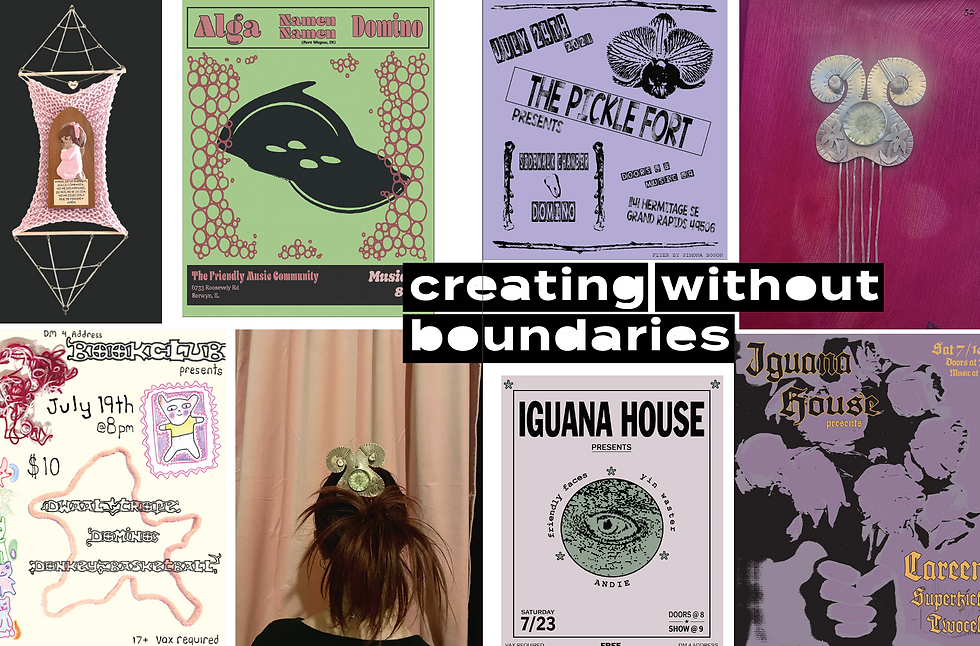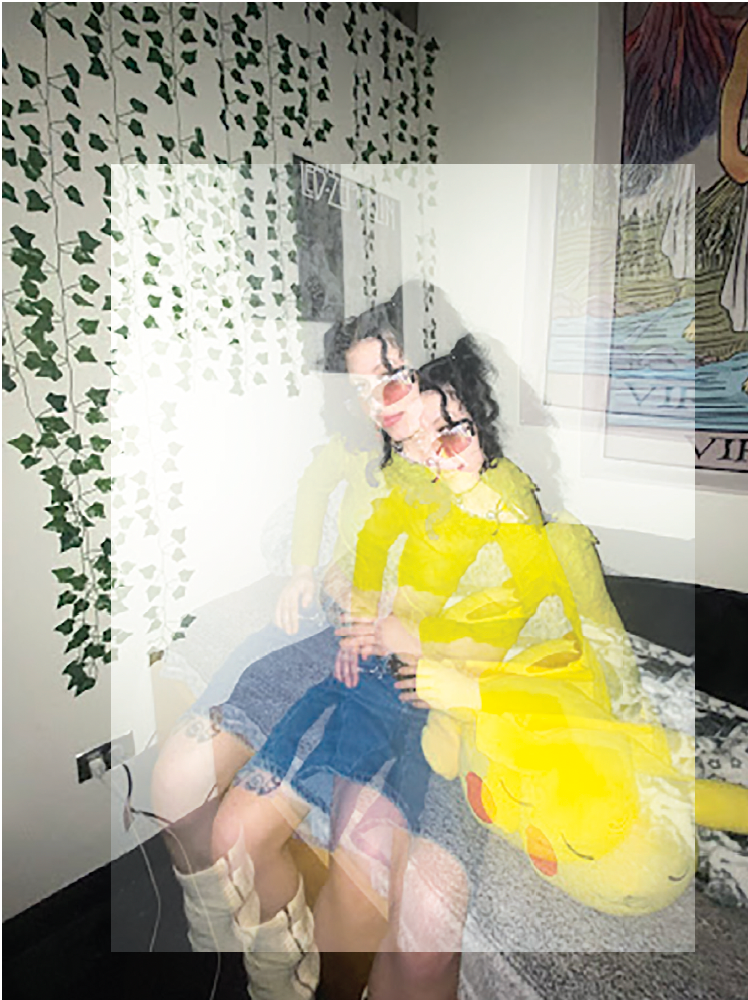Punk: Fashion Reimagined
- jmilazzo620
- Oct 16, 2023
- 3 min read
By: Jada Milazzo
March 31, 2023

Photos courtesy of Jacob Sutton
The subculture that originated through the rebellion among youths who were outraged by the workings of society, has been revamped. While maintaining the codes of punk fashion; such as leather, chains, and plaid, designers and fashion enthusiasts are injecting a level of femininity and softness to the rebellion. Punk is still a rebellion of what fashion is and should be, but has created subcultures within the punk style. It wants to offend your bourgeois sensibilities and rub your face in something unpleasant or unappealing. It is bratty, obscene, rude, and inappropriate. Punk is a dare to try to look away. Punk and Indie culture continuously change because society continues to evolve, creating new forms of rebellion.
As defined by Oxford Dictionary, punk is a loud, fast-moving, and aggressive form of art. The punk genre began in the mid-1970s, with roots in garage rock bands as a response to England’s depressed economic and sociopolitical conditions. At this time, Vivienne Westwood, deemed the “mother of punk”, majorly contributed to the visual and fashion form aesthetic of punk. Westwood opened the SEX clothing shop, that took off; creating a frenzy between this idea of punk music and fashion. Caught in similar economic conditions, New Yorkers were reinventing music and style as a form of protest against the star-centered creative industry. Similar to Dada destroying the institution of art, punk was set to destroy the institution of fashion. In her book, The Glorious Outcasts, Elizabeth Wilson defines punk as “trash culture gone avant-garde and/or the avant-garde gone trash”. Within the beginning of this movement, young people defined themselves as an anti-fashion urban youth street culture, in which the clothes being worn somewhat catered to the lower income people. Punks were cutting up old clothes from charities and thrift shops, as well as destroying fabrics and refashioning outfits in a manner that called for crude construction techniques. Garments were deconstructed into new forms, giving clothes a rebirth. In the 1970s, this torn fashion shocked people, because until then, fabric and materials were kept in pristine condition, but now safety pins held fabrics together, neck chains were made from padlocks and chain, and trousers were torn to revel tights and dirty legs. Around 1977, British designer Zandra Rhodes, took elements of the punk style to create her collections that were refined punk styles in brighter colors, which catered to the rich and famous buyers. For example, she used gold safety pins, and gold thread to adorn torn holes and edges. In this way, watered down punk chic worked its way to the high class. Punk has grown far and wide in how it translates into today’s societal outlook.

Punk fashion has become more than Doc Martens, plaid shirts, and torn black clothing; its comeback is a juxtaposition of grit and glamor. It has crept back onto the runways with the return of neo punk elements: leather corsets, delicate cutout details, sharp lapels with puff shoulders, pearls and metal chokers. Fashion is in its most self-aware period in history, brands and designers are reacting to global and political events in explicit and subtle ways. Dior and Prada have responded to sexism, Balenciaga commented on fake news, and Calvin Klein took a stand on the state of America. One side of fashion was defying the status quo with sequins, sparkles, and optimism, the other was responding with bite and spike. Stylist, Jan-Michael Quammie, says that “punk means rebellion and resistance, and it will always be that. It was never meant to be trendy– it’s timeless, it’s a lifestyle”. That is what is at the core of their style; punks are anti-conformists, misunderstood, and ignored, and most of all their individualistic. Slick Woods, Rihanna, and FKA Twigs are all great examples of the new punk women, who have a singular, individualistic ‘fuck-you’ look that carries a strong message. In fashion, punk is birthed in uniqueness because the look is inextricably linked with the mindset of authenticity. Here are some designers that are pushing the limits of punk fashion ideals:

Marine Serre
French fashion designer, Marine Serre, takes inspiration from the 60s/70s punk rock era, with a heavy focus on edgy apparel that utilizes plaid patterns as well as chains and knits.
Chetlo
Chetlo is an Asian-American designer, who channels futuristic punk through his creative lens to exemplify his fresh take on the fusion of punk and luxury streetwear. He creates enticing feminine shapes that are sharp and contrasting.
ANGER
Founder, Christian Anger, reflects the brands futuristic take on punk through the use of oversized silhouettes, neon coloring, facial coverings, and emotional charged garments. They draw inspiration from bands like Dogbreath, Blu Anxxiety, and Lustsick Puppy. The collections capture different forms of anger, in which they achieve the essence of true punk fashion and feelings.




Comments